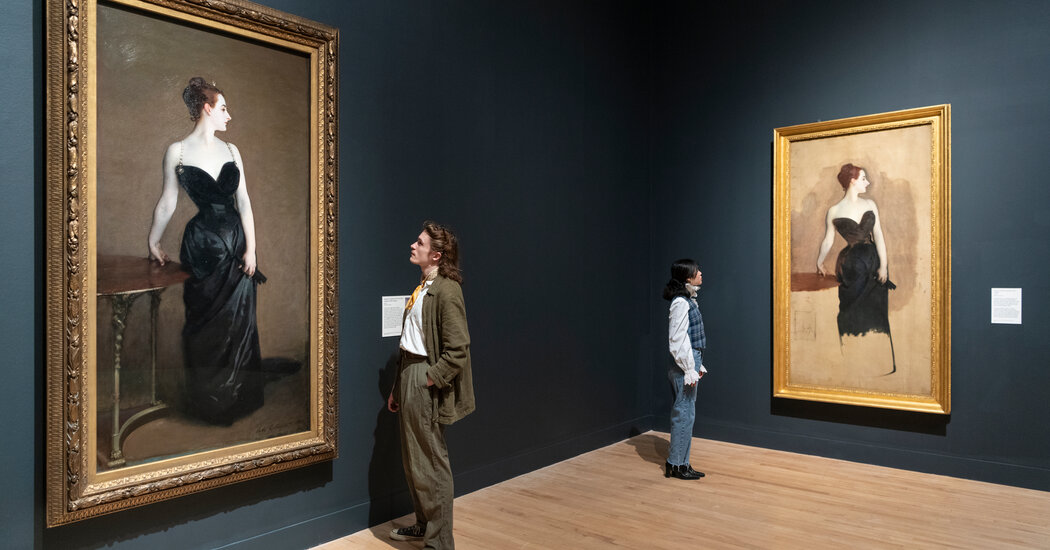
Perhaps you, too, know the notorious “Madame X”?
She of the aquiline profile, alabaster skin and plunging black neckline has recently been transported to Tate Britain, in London, for the second stop of “Sargent and Fashion” (through July 7), which debuted at the Museum of Fine Art, Boston, last fall. The retrospective brings together over 50 works that highlight the portraitist’s interest in how the clothes make the man, or woman.
In 1882, John Singer Sargent and his subject Virginie Amélie Gautreau were both 20-something Americans in Paris, outsiders eager to break into the city’s rarefied circles and learn the unspoken rules of class and propriety. The young painter, newly admitted to the French capital’s prestigious Salon, asked the New Orleans-born beauty notorious for her eccentric cosmetic routine (she covered her skin with violet-tinged white powder and rouged the edges of her ears) to sit for a portrait.
The strikingly modern painting, with its pared-back palette and austere lines, pleased both its painter and sitter, but when it was shown publicly in 1884, critics described Gautreau as haughty, her dress crude. Others criticized Sargent’s painting as overly stylized and indecorous. Gautreau’s mother pronounced that he had destroyed her daughter’s reputation. Sargent removed the young woman’s name from the portrait’s title and replaced it with “Madame X,” but the damage was done.
An unfinished preparatory study hanging nearby shows the true scandal: One of the dress’s diamond-studded straps was originally painted off-shoulder, as if momentarily slipped over the course of an evening, or, worse, perhaps the state of undress was intentional. Following the outcry in Paris, Sargent repainted the fastening securely in place, but he never showed the painting again and was forced to decamp to London to restore his career. In 1916, after Gautreau’s death, he donated “Madame X” to the Metropolitan Museum of Art, writing to its director, “I suppose it is the best thing I have done.”
He may be right, but in the intervening decades, and up until his death in 1925, Sargent produced a body of work that shows a rare attunement to the public scrutiny faced by women in the public eye. For these women, clothes were a kind of armor, but also an opportunity for self-expression at a time in which gender roles were increasingly in flux.






